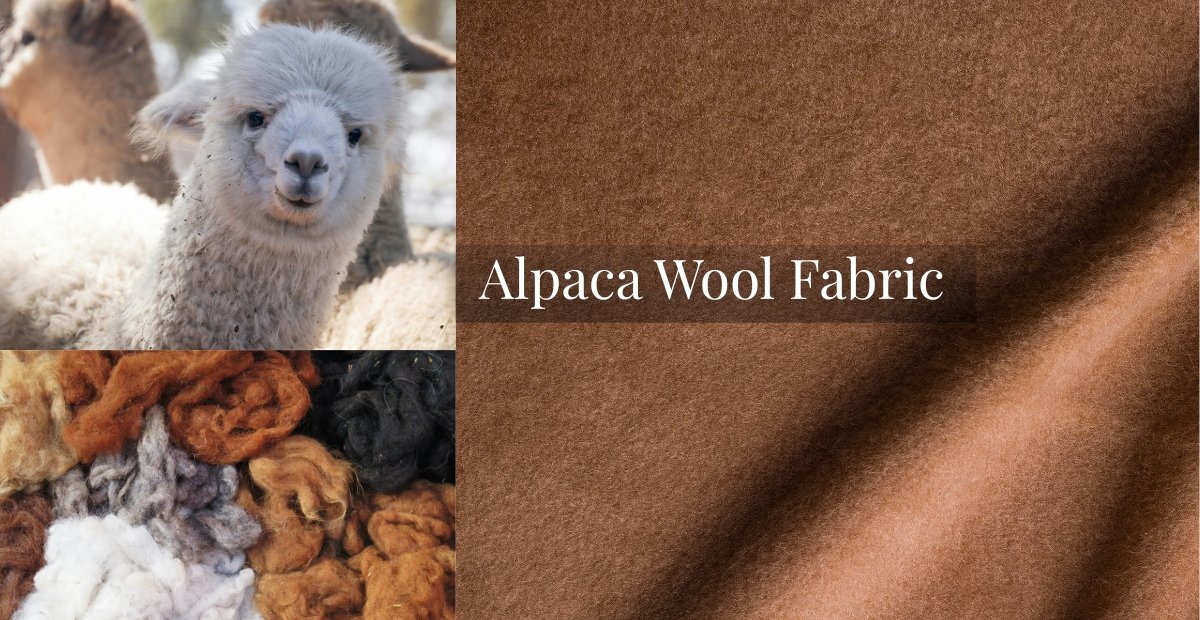The alpaca wool fabric is regarded as one of the most luxurious and sustainable fabrics. Wool is made from the soft, warm, and elegant alpaca fleece and has been a fabric of choice for the ancieent and modern civilization for the durable and beautiful woolend fabrics. In this complete gide, I will summarize the history, properties, uses, benefits and the care instrcuctions for the precious alpaca wool fabric.
A Brief History of Alpaca Wool
The history of alpaca wool begins with the Andean highlands of Peru, Bolivia, and Chile. Alpacas were sacred animals to the Incas and their wool was only used for the royal family. Because of the wool´s fine quality and rarity, it was referred to as the “fiber of the gods.”
The Andean region of Peru is the alpaca wool industry still the weaving and economic impact with the alpaca wool remains. The culture of weaving with the alpaca wool is still practiced today and it is still economically important today as it is used in high-end fashion and home textiles.
Types of Alpaca Wool
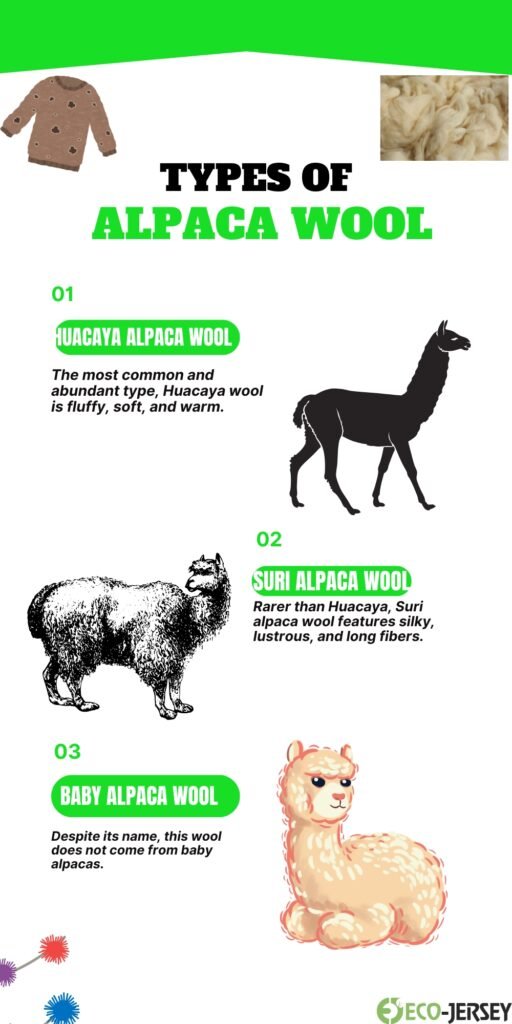
Each alpaca wool does not have the same quality or characteristics. The different types of alpaca wool are determined by the quality and characteristics of the wool.
- Huacaya Alpaca Wool – This is the most abundant type of wool and also the most commonly known. It is fluffy, soft, warm, and it is excellent to use in the manufacture of sweaters and coats.
- Suri Alpaca Wool – This type of angora wool fabric is used for scarves, elegant textiles, and shawls. It is rare, has silky, soft, and shiny wool, and has long fibers.
- Baby Alpaca Wool – This doesn’t come from baby alpacas! It’s just the name given to the finest and softest fibers sheared from the alpaca in their first few years.
Different types of alpaca wool have their own unique characteristics, but they are all admired for their softness, durability, and natural beauty.
Alpaca Wool Fabric
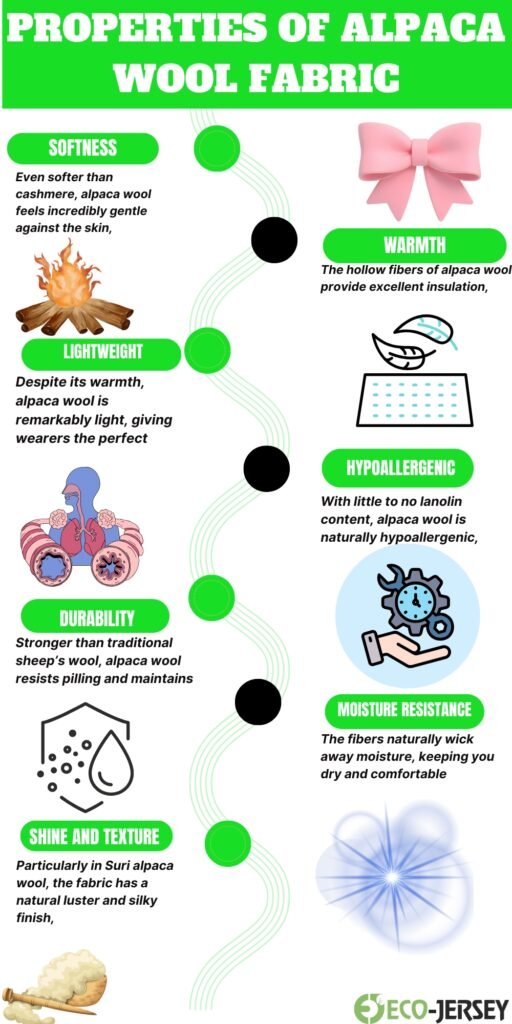
Alpaca wool fabric is wonderful and works wonders, because of it unique natural characteristics.
- Softness – Alpaca wool what is wool fabric is even softer than cashmere and feels amazing on the skin.
- Warmth – Alpaca wool has amazing warm hollow fibers that insulate and trap body heat without it feeling heavy.
- Lightweight – Alpaca wool is warm but it is also light, which is a great combination.
- Hypoallergenic – Alpaca wool is great for sensitive skin, and it is hypoallergenic because it has little to no lanolin.
- Durability – Alpaca wool is strong and durable, and it is even stronger than sheep wool fabric. It doesn’t pill.
- Moisture Resistance – Alpaca wool helps keep dry because it absorbs moisture.
- Shine and Texture – Suri alpaca wool is particularly shiny and has a soft finish that adds to the elegance.
Reasons People Like Alpaca Wool Fabric
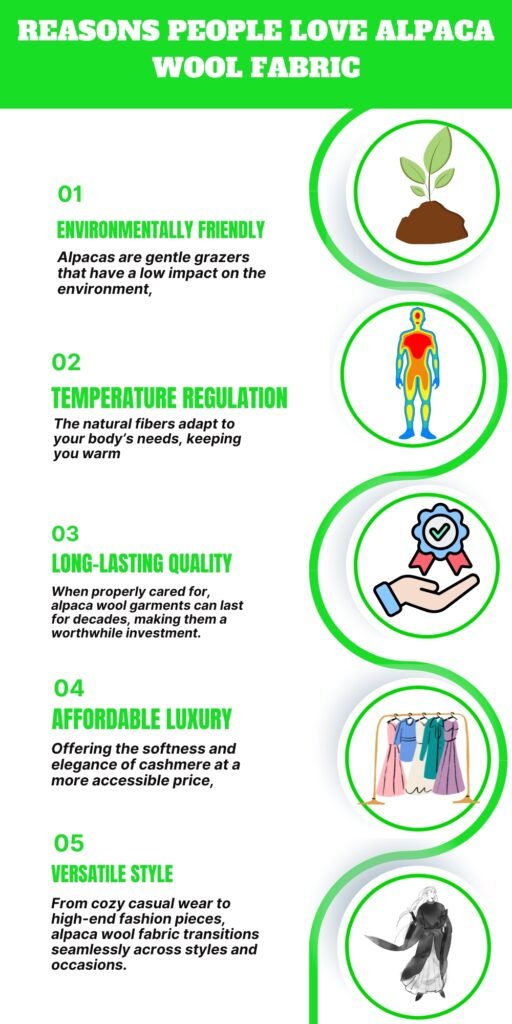
Here’s why people like alpaca wool fabric:
- Environmentally Friendly – Alpacas are lightweight grazers and don’t harm the environment, making their wool something you can sustainably use.
- Temperature Adjustment – Wool from alpacas warms you during freezing temperatures and cools you off during warmer weather.
- Long Lasting – A well cared for alpaca wool garment will last you many decades, making it a good costly item.
- Affordable Luxury – Alpaca wool gives you a nice alternative to cashmere for a cheaper price.
- Works with Everything – It can be transformed from casual clothes to high-end pieces with ease.
Common Uses of Alpaca Wool Fabric
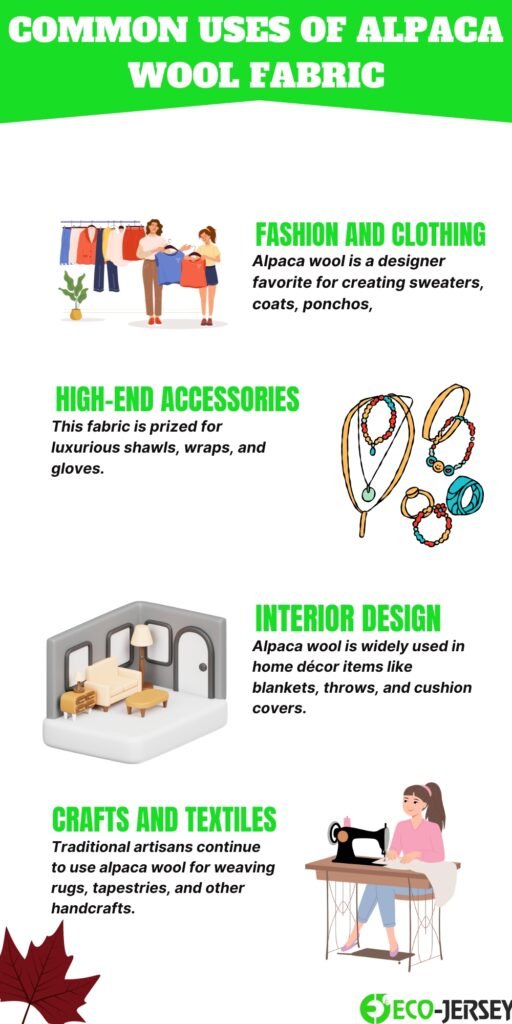
Because you can do a lot with it, alpaca wool fabric is a part of many different trades:
1. Fashion and Clothes
Alpaca wool fabric is common in the making of sweaters, scarves, coats, ponchos, gloves, and hats. It is lightweight, warm, and soft, making it something designers love to use.
2. High-End Accessories
Alpaca wool is coveted for making shawls, wraps, and sloves. Baby-alpaca scarves are especially fancy and are often gifted.
3. Interior Design
Alpaca wool blankets, throws, and cushion covers enhance the decor and provide cosiness to any room. Their strength helps the decor last a long time.
4. Crafts and Textiles
Artisans continue to weave rugs and tapestries using alpaca and handcrafts, cherishing their cultural practices.
Caring for Your Alpaca Wool Fabric
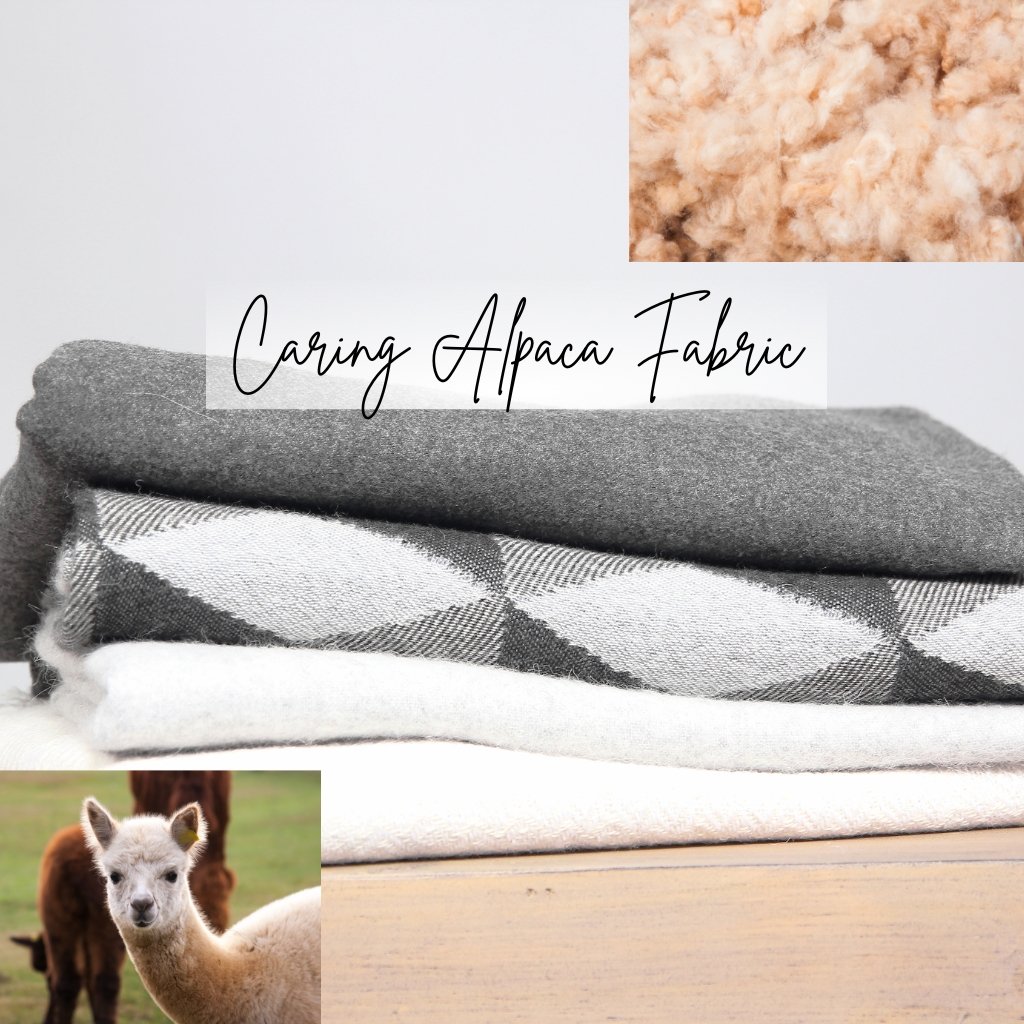
Like any other natural fiber, alpaca wool must be cared for properly.
- Washing – Hand wash with a mild soap and cold water or dry clean delicate garments.
- Drying – Drying must be done by laying the garments flat. Do not wring or hang the garments to dry because it will distort the garment.
- Storage – Storage must be done with breathable bags and with cedar and lavender to knock away moths.
- Brushing – To keep garments smooth, use a soft garment brush.
By following these simple pointers, alpaca wool fabric will continue to look beautiful and new.
Why Alpaca Wool Fabric is Still High in Demand
Alpaca wool fabric is a textile, tradition, and a luxury. Because alpaca wool is soft, warm, and durable, it is highly valued in other countries too. It is also a perfect eco-friendly option for people.
Final Thoughts
Alpaca wool fabric is timeless. It moved from ancient Incan royalty to modern day runways and homes. It’s the history and properties making it one of the most versatile fabrics in the world. Alpaca wool is one of the most versatile and elegantly timeless fabrics in the world, whether it is worn or used to decorate a home.
FAQs
What is Alpaca Wool Fabric?
Alpaca wool fabric is a natural textile made from the fleece of alpacas, prized for its softness, warmth, and durability.
Is Alpaca Wool warmer than sheep’s wool?
Yes, alpaca wool is warmer and lighter than sheep’s wool due to its hollow fibers, which provide excellent insulation.
Is Alpaca Wool Fabric itchy?
No, alpaca wool is hypoallergenic and lanolin-free, making it softer and more comfortable against the skin than many other types of wool.

